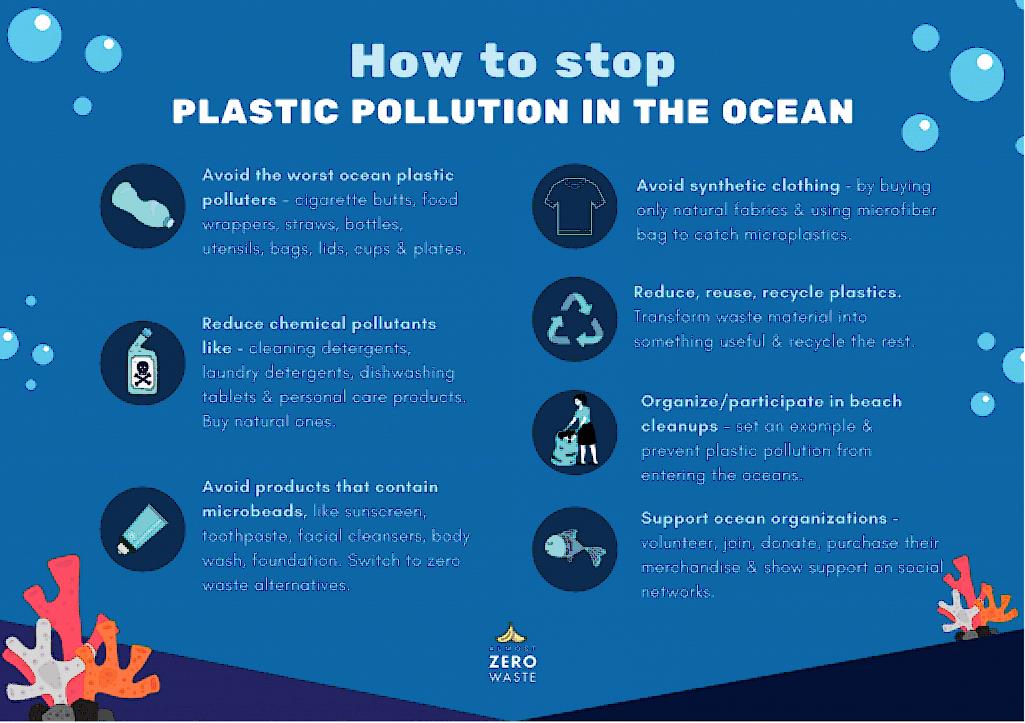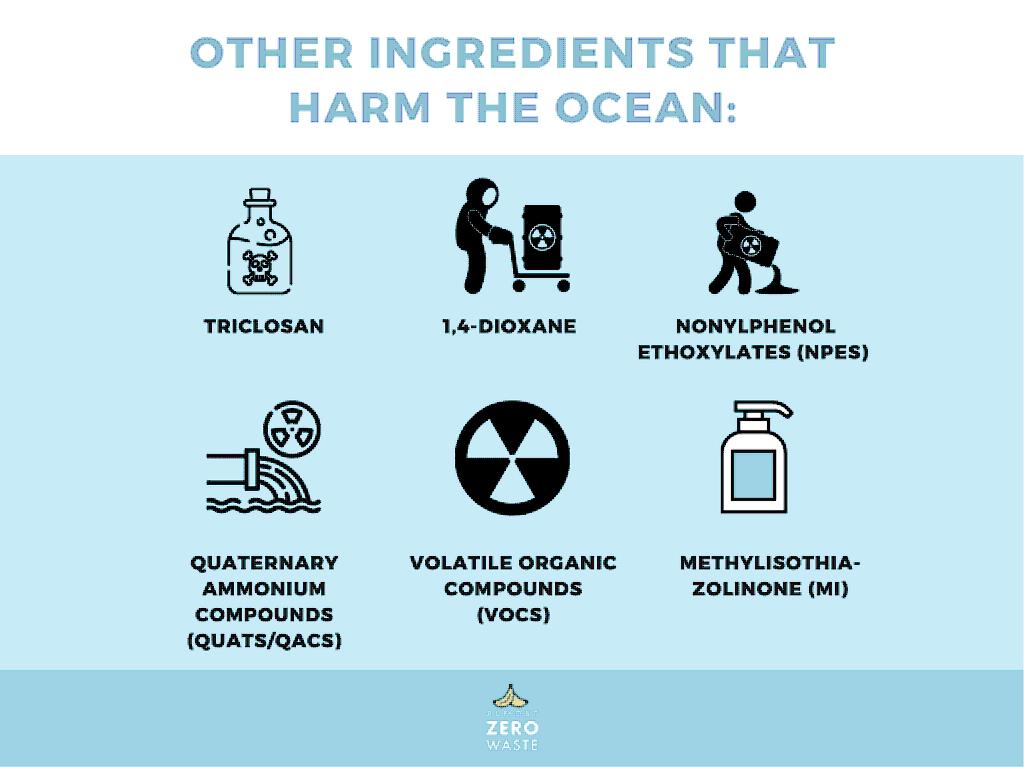Plastic pollution is among the worst threats to our oceans, but somehow, 8 million pieces of plastic find their way into our ocean daily. Preventing ocean pollution is extremely important, and it can happen by simply changing a few wasteful habits. In this article, you will find seven ideas on how to stop plastic pollution from getting into our oceans and a few statistics that might motivate you to avoid plastic.
Here are 7 solutions on how to prevent plastic pollution in the ocean:

There are still way too many products are sold in single-use plastic packaging.
Even though some countries are banning certain single-use plastics, we can still do better.
You can do that by avoiding the most common & worst ocean polluters:
You can easily avoid these by switching to plastic-free alternatives.
A lot of the detergents you use daily can have adverse effects on you and our oceans. Some ingredients can cause a lot of damage, such as:

Detergents enter water mainly through sewage. Additionally, when it rains, those chemicals are also washed in rivers and then entering the ocean.
When you dispose of chemicals Improperly, this pollutes marine life and kills sea mammals, corals, and fish. What you can do to avoid that is:
Microbeads are solid, tiny pieces of plastic. They are used in personal care and cleaning products because of their exfoliant properties, bulking agents, shelf-life, etc.
You can find them in products like:
Microbeads can’t get captured by most wastewater treatment systems, so they often end up in our rivers, lakes, and oceans. They cause plastic particle water pollution and harm marine life, the environment, and our health, because of their ability to adsorb toxins. Some products contain plastic as ingredients (microbeads), which is the equivalent of their plastic packaging. The easiest way to avoid microbeads in your products is to switch to natural and zero waste personal care products.
Synthetic clothing is the largest source of microplastics. It accounts for 34.8% of global microplastic pollution in the ocean.
Every time you wash synthetic clothes, hundreds of microplastic are released. Once the fibers are shredded, they are discharged in sewage water. Microfibers can absorb chemicals present in the water or sewage sludge, and they can also contain chemical additives from the manufacturing phases. Once the microfibers reach the oceans, they are ingested by marine animals, causing various physical injuries and negative impacts.
To reduce the discharge of microplastics from synthetic clothing, you can:
While it is almost impossible to avoid all plastic in our lives, you can reuse and upcycle various plastic containers in many ways.
Upcycling is the process of transforming waste material into something more valuable and useful. In that way, you will get more of an item instead of throwing it away as soon you are done using it. You can easily do a search to find a few ideas for what you can do with plastic containers. It is best to focus on reducing and reusing first because plastic is hard to recycle, and not all of it is recyclable. However, for all plastic items that you can’t reuse, make sure to recycle them.
If you are unsure whether you can recycle something, check your local recycling guidelines.
By participating in such cleanups, you set an excellent example for others and prevent plastic pollution from entering the oceans.
Organizing a beach cleanup can be tricky. To make it easier, follow these guidelines:
Although it might take some time, organizing a beach cleanup is worth it.
There are many great organizations work on cleaning up the oceans and rivers. There are several ways we can help them:
Do your research to find such organizations, but a few great ones are:
“Fun” facts about plastic pollution in the ocean: